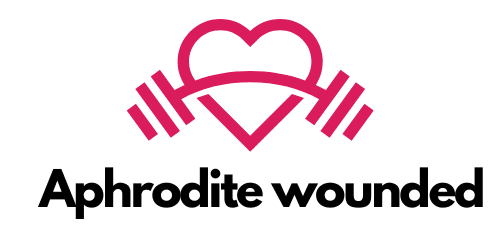How to distinguish a dead egg from a contaminated one?

Identifying non-viable eggs in the hatchery process is crucial for ensuring high hatchability rates and optimal chick health. Dead eggs and contaminated eggs not only affect hatchery efficiency but can also compromise the health of viable embryos. By recognizing the differences between these two types of non-viable eggs, hatchery managers can implement effective strategies for maintaining a healthy incubation environment. The ability to distinguish between dead and contaminated eggs is essential for enhancing overall hatchery productivity and reducing economic losses.
Definitions and differences between dead and contaminated eggs
Dead eggs contain embryos that have died during development due to various factors, while contaminated eggs are compromised by external pathogens or poor sanitation practices. Contaminated eggs pose serious risks to the entire hatchery.
A voir aussi : Reviving nostalgia: shop iconic parachute pants
Explanation of what constitutes a dead egg
A dead egg is one that contains an embryo that has died during its development. Various factors, such as improper incubation conditions or genetic issues, can lead to embryo mortality. A dead egg can occur at any stage of incubation, but the signs of death may not be immediately apparent. Often, the egg may appear normal initially, but as time progresses, specific indicators will emerge that signal embryo death, including changes in the appearance of the air cell and the overall structure of the egg.
What is a contaminated egg?
On the other hand, a contaminated egg is one that has been compromised by the introduction of external pathogens, bacteria, or fungi. Contamination can occur due to poor sanitation practices, improper handling, or cross-contamination from other eggs or equipment. Unlike dead eggs, contaminated eggs can pose a risk not just to the individual egg but also to the entire hatchery environment, as pathogens can spread and affect healthy embryos.
Cela peut vous intéresser : How to Create a Personalized Workout Plan Using Wearable Fitness Trackers?
Causes of egg mortality and contamination
Egg mortality can result from factors such as temperature fluctuations and improper handling, while contamination often arises from poor hygiene and cross-contamination among equipment and handlers.
Common factors leading to embryo death
Embryo death can be attributed to several factors, with temperature fluctuations being one of the most significant. Maintaining consistent temperature and humidity levels is vital for embryo development. Other factors include inadequate ventilation, physical damage to the eggs, and poor genetics. Even minor disturbances in the incubation process can lead to increased mortality rates, highlighting the importance of careful monitoring.
How contamination occurs
Contamination can arise from various sources, with poor hygiene practices being a primary contributor. This includes the use of unclean equipment, improper sanitization of hatchery areas, and the introduction of pathogens through handling by personnel. Cross-contamination can also occur if contaminated eggs are placed in proximity to viable ones, leading to widespread issues in the hatchery. Regular cleaning and disinfection protocols are essential for minimizing these risks.
Identifying dead eggs
Identifying dead eggs involves using methods such as candling to observe embryo development, along with visual cues like discoloration and abnormal air cell size.
Methods of candling
One effective method for identifying dead eggs is candling, which involves shining a light through the egg to observe its contents. During candling, hatchery staff can assess the development of the embryo and identify signs of death. A live embryo will show signs of movement and healthy vascularization, whereas a dead egg may appear dark or show no signs of life. Candling should be performed at various stages during incubation to monitor embryo viability accurately.
Visual cues
In addition to candling, certain visual cues can indicate the presence of a dead egg. Discoloration of the egg shell, such as yellowing or dark spots, may signify decay. Abnormal air cell size is another critical indicator; a shriveled or excessively large air cell often points to embryo death. Observing these physical characteristics can help hatchery staff make informed decisions regarding egg viability.
Identifying contaminated eggs
Identifying contaminated eggs can be achieved by observing foul odors, visible mold, or bacterial growth, and confirming contamination through laboratory testing.
Foul odors and visible signs
Contaminated eggs can often be identified by foul odors emanating from the shell. This is a clear sign of bacterial or fungal growth inside the egg. Additionally, visible mold or signs of bacterial colonies on the shell surface indicate severe contamination. Such eggs should be promptly removed from the hatchery environment to prevent the spread of pathogens.
The role of laboratory testing
While some signs of contamination can be identified visually, laboratory testing may be necessary for more accurate identification. Various methods, such as microbial cultures, can determine the presence of specific pathogens within the egg. This is especially important in larger hatcheries, where the volume of eggs can make visual inspections insufficient. Regular testing can help ensure that contaminated eggs are identified and dealt with appropriately.
Handling and disposal of non-viable eggs
Handling and disposal of non-viable eggs should follow strict protocols to safely remove dead or contaminated eggs, thereby preventing the spread of infection in the hatchery.
Proper protocols for removal
Once dead or contaminated eggs have been identified, it is important to follow proper protocols for their removal. Eggs should be handled carefully to prevent any potential spread of pathogens to other eggs. Establishing clear procedures for disposal, such as placing non-viable eggs in designated containers, can help maintain a hygienic hatchery environment.
Sanitizing equipment and hatchery areas
After the removal of dead or contaminated eggs, thorough cleaning and sanitization of equipment and hatchery areas are essential. This minimizes the risk of future contamination and ensures that viable eggs remain safe. Using approved disinfectants and following recommended cleaning procedures can help maintain a biosecure environment within the hatchery.
Technological solutions for egg quality assessment
Technological solutions for egg quality assessment include automated candling systems and advanced detection methods that identify contamination without breaking the eggshell.
Automated candling systems
Technological advancements have made it easier to monitor egg quality through automated candling systems. These systems can provide accurate assessments of embryo viability without the need for manual handling, reducing labor costs and increasing efficiency in large-scale operations. Automated systems can quickly process large volumes of eggs, making it easier to identify dead eggs early in the incubation process.
New technologies for contamination detection
Emerging technologies, such as non-invasive sensors, offer innovative solutions for detecting contamination without breaking the eggshell. These advancements allow hatcheries to maintain the integrity of the eggs while still monitoring for potential pathogens. Utilizing such technologies can enhance the overall safety and efficiency of hatchery operations, ensuring that both dead and contaminated eggs are effectively identified.
In summary, distinguishing between dead eggs and contaminated eggs is crucial for maintaining hatchery health and productivity. Early detection of non-viable eggs not only reduces the risk of spreading pathogens but also ensures that the remaining eggs receive the best possible care. Implementing proper handling, disposal procedures, and technological advancements can significantly enhance hatchery management. By prioritizing the identification and management of dead and contaminated eggs, hatcheries can improve overall chick health and optimize production outcomes
